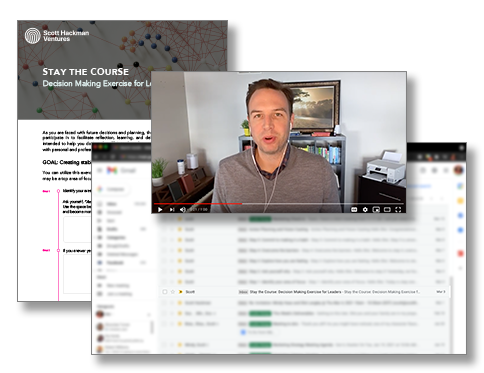The thought of conducting one-on-one meetings with your team does not have to be a fear-invoking, stress inducing foray into unknown territory. Too often, both parties are hesitant to approach the process that if managed effectively, can bring great clarity and mutually enhance the professional relationship. Additionally, it can foster a focused and collective diligence in achieving company goals. With just a bit of time devoted to semi-collaborative one-on-one meeting preparation, a commitment to authenticity, and a willingness to give and accept constructive feedback, a leader can conduct effective, purposeful one-on-one meetings. You can set the climate for productive conversations that will not only empower team members but will also strengthen and expand your leadership capacity.
Why is it important to know how to conduct a One-On-One Meeting?
Well planned, efficient and effective one-on-one meetings provide the opportunity for everyone to “get better”. Helping team members recognize their strengths, make improvements in addressing their challenges, and develop to their fullest potential is a strategic goal of a great leader. One-on-one meetings provide a professionally intimate atmosphere to build on that goal. It is an opportunity for a team member to be seen and heard and to actively engage in the growth process for the company and for themselves. This commitment to providing an open forum for feedback, and proactively addressing the presented concerns fosters an investment in company culture. Effective one-on-one meetings are the foundation of collective cohesiveness. They are vital to achieving team success.
Our Leadership Development Program equips current leaders with the tools they need to build future leaders within their organizations. One important tool is our 8-step guide to conducting one-on-one meetings.
8 Steps to Conducting 1-1 Meetings with Employees
- Value Time – Make scheduling the one-on-one meeting with each team member a priority. Hold this time consistently to convey that they matter and that they are a valued member of your team.
- Determine Purpose and Objectives – Have your team member play an active role in the process by creating and sharing a collaborative agenda. Give them the opportunity to include their input and make it clear that their feedback is encouraged. Collaboratively engage in framing the objectives. This will help to guide the meeting and help with efficiency. It also empowers them to continue to actively engage.
- Create a Safe Space – Be informal and be authentic. Start with a check in. Share details about yourself first. Create a climate of transparency and build trust through your authenticity. Ask how things are going outside of work. Ask how things are going in the office. Give them the opportunity to share and provide feedback.
- Recognition – Lead with accomplishments and share how their successes positively impact team goals. Find out their preferred method of acknowledgement and give recognition and appreciation. Provide an opportunity for them to provide feedback on their perceived challenges and discuss solutions. Ask for their input on effective methods of management. Ask for their input on team morale.
- Goal Setting – Get updates on any previously set goals. Review progress and determine effective ways to achieve them. Create new goals.
- Define Solutions – Provide a clear understanding of what successful goal achievement looks like. Create a list of action items that when proactively executed will contribute to this accomplishment.
- Notes – Take notes. This will help you retain important details in the discussion, and aid in creating action items that align with the organizational strategic plan
- Follow Up – Follow up with your team member. Provide a copy of the notes that you took. This reiterates your commitment to receiving their feedback and to proactively addressing raised concerns. This also ensures that they have the support needed to be successful. Use this information in the next meeting to track progress and determine the path forward.
Next Steps
Use these tips to establish a great rapport with your team. Effective one-on-one meetings contribute to growth in emotional intelligence which is a key indicator of great leadership. Use what you learn from employee feedback to exercise empathy, delegate responsibilities strategically, and manage and motivate your team productively.
Our Leadership Development Program equips current leaders with the tools they need to build future leaders within their organizations. Some of those tools include a more in-depth look at activities like those mentioned above.
Book a complimentary consultation to learn more about how we can help.
——————
Check out other posts in this series:


Scott Hackman is the Founder and CVO of Scott Hackman Ventures. He has over 15 years of experience in business advising, coaching, and leading growth through transitions.
Meet Scott.




